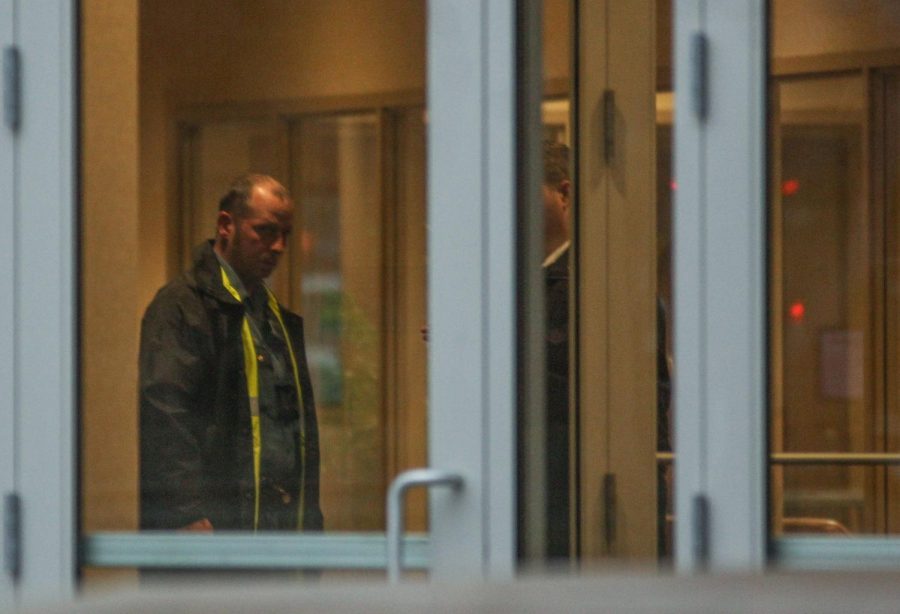During bomb threats, what’s the Hamline plan?
The recent threats at St. Thomas urge the question: how would a bomb threat look at Hamline?
Police officers and St. Paul Police bomb squad arrive at McNeely Hall on April 17.
May 1, 2019
A bomb threat at The University of St. Thomas resulted in the evacuation of faculty, students, staff and even babies from the on-campus daycare on the morning of April 7.
After a police investigation, the threat was determined to be a hoax. In fact, most bomb threats are hoaxes according to Dr. Steve Albrecht author of an article on psychologytoday.com.
“The biggest problem with stopping explosions is that they don’t begin with pre-attack threats. In simple terms, real bombers bomb; they don’t make bomb threats,” Albrecht said. “The majority of police calls related to bombs are false alarms, made by drunks, the mentally ill, revenge-seeking ex-employees or the kid who doesn’t want to take his third-period French exam.”
The above is supported by the two twenty-year-old Hamline students who created and detonated plastic bottle bombs out of toilet cleaner and aluminum foil in 2011 without making a threat first. The bombs did not cause injury or damage, and the men involved insisted they did not intend to scare anyone; they were just bored.
Hamline has not had a bomb threat in institutional memory, but Mel Heikkinen, Director of Hamline Public Safety is brushed up on what to do if there is one in the future.
“The initial thing we would do would be to contact law enforcement. Then we would contact the FBI,” Heikkinen said.
Hamline received an email about the St. Thomas threats from the local FBI Fusion Center, which alerted all higher education institutions of the threat, and asked them to respond immediately if they received a similar threat.
Heikkinen stated that Hamline would evacuate the buildings indicated as having bomb(s).
That’s where Jeff Papas, Director of Communications comes in. Papas said a threat would be reported with instructions on the website twitter, and Hamline email, but that turning on text notifications is important for quick information disbursement.
To sign up for text notifications, go to hamline.edu and search “Hamline Alert”, where instructions for signing up to receive important Hamline information is provided.
The school policy listed on violent threats cites an ordinance of the U.S. Department of Education that requires Hamline to develop “timely warnings” for any threat to students or employees on campus. This is part of the Clery Act, introduced in 1990 in response to a brutal rape and murder to encourage colleges and universities to keep their students updated about crime on and surrounding campus. The “timely” part of those warnings does not have any amount of time attached to it.
Papas and Heikkenin, who work together frequently, want to ensure students safety while also giving them as detailed information as they can gather.
“There are times when communication can do as much harm as it can good,” Papas said, “so we have to make certain that while we are timely, we are also accurate.”


